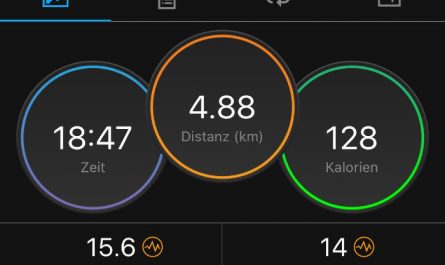Reselling unused clothes is a good way to reduce textile waste. Nowadays, you can do this easily online and from the comfort of your own home. Find out what is important when selling used clothing online.
Do you have clothes that you no longer need and want to sell them? Check out my last week’s blog post and find out where you can sell your clothes online. However, I do not just want to write about where you can sell your clothes. I also want to give you some tips on what is important. To be honest, I am not an expert in selling second-hand clothes myself. I just started using the app Depop (which I introduced in my last post). However, when I read in an article that there are people with almost 600.000 followers and 34.000 sales who use Depop, I got curious (Fischer De Santi, 2020). What? Followers to sell clothes? Exactly. Depop is one of the most popular online platforms for selling second-hand fashion, which works very similarly to Instagram: You can follow others, like items that are listed for sale, and use tags to describe your items. The company Depop was founded in 2011 in the UK. The platform has grown rapidly in the last few years. Today more than 16 million users worldwide use the app (Fischer De Santi, 2020). I also read that young people earn up to 300,000 USD per year by selling clothes through Depop (Handbury, 2019). However, this blog post should not motivate you to give up everything and do nothing but sell clothes. But since I really like the idea that everyone can simply sell their old clothes online, I wanted to find out how to do this successfully. That is why I watched many videos, read articles, and did some research so that I can put together some tips for you. Since Depop is, in my opinion, the most promising platform and can be used all over the world, some of the following tips are meant for Depop only. However, most of the tips can also be applied to any other platform.
Choosing the platform
First, you have to find out which platform suits you best. There are three things you need to consider:
1. Where you live
2. What you want to sell
3. How much effort you want to put in.
1. Where you live: Not all platforms can be used in all countries. Poshmark, for example, is a great app that is only available in the USA and Canada. So check in advance if the app you want to use will work in your country.
2. What you want to sell: On some platforms, only luxury brands are sold. On others, the range is wider and you can also sell fast fashion. Check in advance what you want to sell and whether there is a demand for this type of clothing on the platform.
3. How much effort you want to put in: Selling clothes online can be time-consuming. That is why some platforms offer to do all the work for you. But be aware of the conditions that apply, because the platforms usually charge a high fee for this.

What to sell
Basically, you can sell anything on the platforms. To get rid of your items, you should consider a few simple things. It is always best to sell timeless clothes. However, if you have special clothes to sell, ask yourself if they are in fashion. You should only include items in your profile that have a chance of being bought. Otherwise, your profile will look unattractive. It is also important to consider seasonality. Do not try to sell winter sweaters in spring, but in autumn. Furthermore, you should only sell things that are in good condition. Remember that you will be rated by the buyers.
Your profile
This section is specifically for Depop. When setting up a Depop account, you have to create a profile. It is important that you not only choose a username but also add a profile picture and a bio. In the bio, you should write in which country you live and what kind of clothes you sell (e.g., luxury brands, vintage, fast fashion). It is also a good opportunity to mention conditions for shipping, discounts, and everything else.

Pictures
It is essential that your pictures are of good quality, bright and taken from the right angle. The best light is natural light, so the photos should preferably be taken in a bright place in your home. It is also important to avoid messy backgrounds. Instead, choose a colorful and simple background. Do not use filters that could falsify the colors of the item. It is also best to wear the item in the picture. Try to present the item you want to sell in an outfit and establish your style.
Item description
Once the pictures are taken, the subject must be described. The rule is the more detailed, the better. Make sure that you specify not only size and colour, but also the style, fabrics, season and anything else you can say about the item. It is also essential to give the exact measurements of the article, such as length and width. Enter as much information and keywords as possible so that your items can be found. Also, learn the language of the platform. On Depop, for example, Deadstock refers to an article that has never been worn before. You should also be honest about the condition of the item and describe if anything is damaged.

Your offers
This section is again specifically for Depop. If you have several things to sell, do not add them all at once. Try to add them in intervals, for example, twice a week. This makes your profile look active and people tend to follow you. Keep reposting your items so that they appear at the top of the list again. With Depop, this works by simply editing and resaving the article. Define your principles regarding negotiations. People will ask you for discounts. So be aware in advance what works and what does not work for you (e.g., if someone buys several items, you could offer free shipping).
Pricing
How do you find the right price? You can either check the app itself to see at what prices other people are selling similar products. Or, you can research on eBay. On eBay, you can check a box in the advanced search that shows you sold listings. There you can compare the prices at which similar items were sold.

Shipping
Once you have sold an item, ship it as soon as possible. Remember that you will be rated by the buyers. So your shipment must make a good impression. You could achieve this by lovingly wrapping the items, enclosing a thank you card, or even a handwritten note. Your buyer will be happy about that.
Sustainability
Since most of these platforms are international, people tend to sell their clothes abroad. But do not forget the environment. Is it really necessary to ship your clothes to other countries? Or will you also find a buyer in your home country? Remember that second-hand is great because it reduces textile waste. Shipping your used clothes all over the world is certainly not very environmentally friendly. I am sure some locals will be interested in your cool clothes too!
What is your opinion on second-hand platforms? Let me know in the comments section below.
Sources:
Fischer De Santi, K. (2020). Der Kleiderschrank wird zur Goldgrube: So lassen sich alte Klamotten schnell weiterverkaufen. Retrieved May 2, 2020, from https://www.tagblatt.ch/leben/der-kleiderschrank-wird-zur-goldgrube-so-lassen-sich-alte-klamotten-schnell-weiterverkaufen-ld.1192531
Handbury, M. (2019). Reich werden mit einer App: Wie die Generation Z mit der Shopping-Plattform Depop ein Vermögen macht. Retrieved May 2, 2020, from https://www.businessinsider.de/tech/reich-werden-mit-einer-app-wie-die-generation-z-mit-der-shopping-plattform-depop-ein-vermoegen-macht-2019-4/
Photo by Natallia Leanovich on Unsplash



I like the idea but i guess this only works for more expensive clothes (honestly, would you buy h&m second hand?). I also really like the idea od chleidertausch evenings with friends. X r
Hi Rebecca, thanks for your comment. Yes, it could definitely be more difficult to sell fast fashion clothes. However, I think it is still better to give it a try instead of throwing them away. I really like your idea of “Chleidertausch” 🙂
thanks for another post full of helpful advices!! I want to declutter my wardrobe in the next days, with your two last articles I’m now good to go to give my clothes a second life! Thank you so much Anja :-*
Hey Veronica, I’m glad my posts are helpful to you. Happy to hear that! Enjoy decluttering 🙂
Hi Anja! thank you so much for sharing this step-by-step guide 🙂
I definitely want to try Depop, but I totally agree with you about focusing just on local buyers, otherwise the sustainability of selling second-hand clothes is simply offset. Looking forward to your next blog post 🙂
Hi Margherita, thank you so much for your comment! I am happy to hear that you are willing to try Depop! I am curious to see what experience you will have with it.
Hi Anja, I love your blog! I have a huge bag of clothes that I haven’t worn in a long time (or don’t fit me anymore) and I can’t wait to use your blog as a guidebook on how to sell them online!
Hey Olivier, I am happy to hear you like it. Let me know how it works for you 🙂 Would love to hear about it!